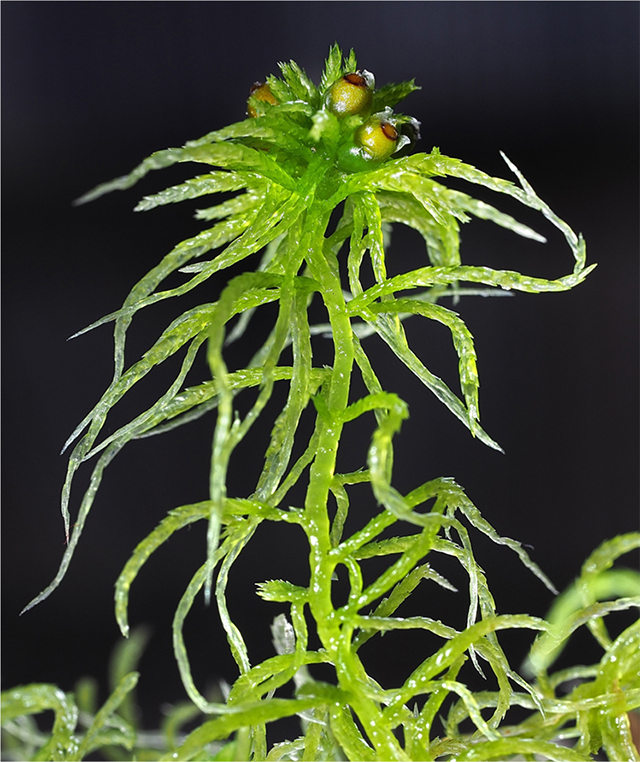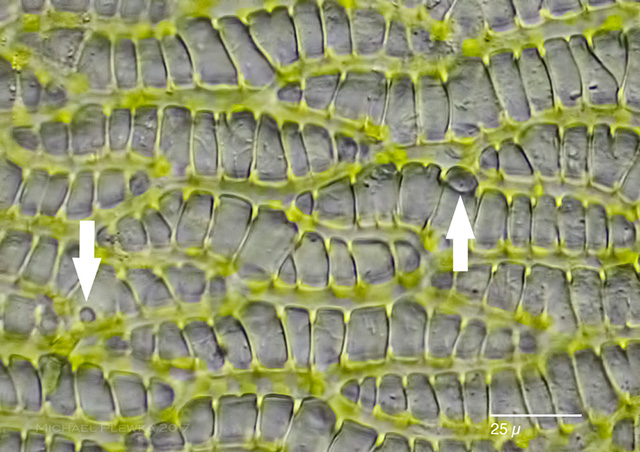|
|
 |
| Sphagnum sp. ; habitus |
| |
 |
|
| Sphagnum sp. There are two types of cells in the leafs of Sphagnum: (1) the chlorophyllose cells (Chlo), which are living cells and have chloroplasts, so that the cells appear green (see image below), and (2) the hyaline cells (Hy), which, although being dead, play an important role in the life of the bryophyte itself and in the ecology of peat mosses, because they can store and evaporate water. This water is also the important for a lot of other organisms that can live in these cells like the bdelloid rotifer Habrotrocha reclusa. (2) |
| |
 |
| Sphagnum sp. The hyaline cells may be perforated by pores, which enable the water exchange and entry of microscopic organisms. (1) |
| |
 |
| Sphagnum sp.; the arrowheads point to the openings of two retort cells. In contrast to the hyaline cells the retort cells do not have any reinforcments. Retort cells are the "home" of some bdelloid rotifers like Habrotrocha roeperi or Scepanotrocha rubra. |
| |
| Location: NSG Heiliges Meer/ Germany (1); Wahner Heide near Cologne/ Germany (2); |
| Habitat: peatland (1;2) |
|
| Date: 10.11.2011 (1); 12.02.2012 (2); |
|
|
|
|
|
|
|